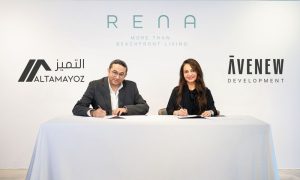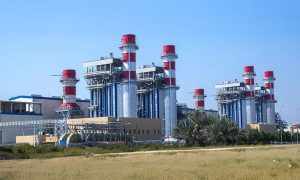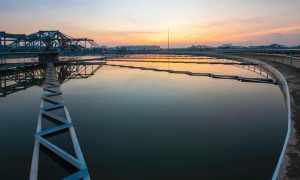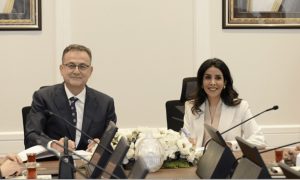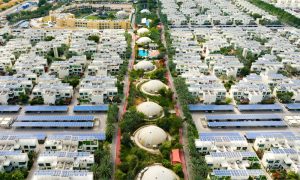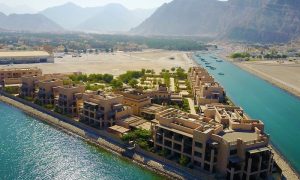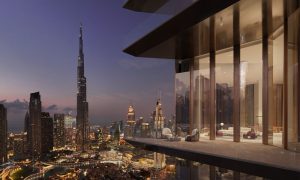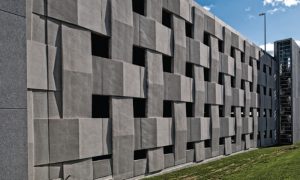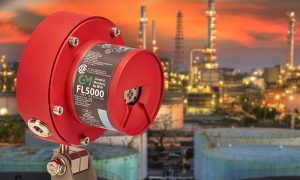Green Light
Four high-tech lighting suppliers debate the most energy-efficient way to illuminate a building

What are the benefits of energy-saving lighting solutions?
Thierry Burot: Firstly, the energy saving is around 70% compared to conventional bulbs, secondly we are speaking of a 50,000-hour lifetime, which is about 15 years based on eight hours of daily usage, even more when you install intelligent sensory systems. The third benefit is the heat dissipation because LED is an electronic component. Finally, as this form of lighting is fully recyclable, there is nothing which can be harmful to the environment.
Karim Aly: Compact Fluorescent Lamps (CFL) use a completely different technology to incandescent alternatives. They consume about 80% less power to give out the same amount of light, last up to 10 times longer and give off 70% less heat on average. Using CFL allows us to lead a more sustainable lifestyle without having to compromise on quality and at the same time drastically cut our electricity bills.
Carol Prince: The main benefit of metal halide systems is the intense illumination they provide. This primary characteristic also has a secondary, space-saving benefit as well. A single metal halide fixture is capable of providing several hundred watts of light energy while other lighting systems require multiple units to provide the same light output. Metal Halides also offer aesthetic benefits that cannot be reproduced by fluorescent lighting systems.
Shadi Kharouf: No matter where they’re installed or how big the system, every Lutron product saves energy by reducing electrical consumption. Taken as a whole, Lutron light controls have reduced electrical use by 9.2 billion kWh, which reduces our customers’ electric bills by US $1 billion annually. Also, since dimmers extend lamp life, customers have to buy fewer bulbs, and that reduces the energy and environmental impacts associated with the manufacturing of fluorescent, incandescent, halogen, and other types of lamps.
[facts]
The Panel
LED lighting:
Thierry Burot
CEO, Switchmade
Compact fluorescent lamps :
Karim Aly
Managing partner, Ecobility
Metal halide :
Carol Prince
Marketing director, RWN Trading
Energy saving dimmer switches :
Shadi Kharouf
Specification Sales Manager, Lutron
[/facts]
How versatile is each technology in adapting to different designs?
TB: The technology can be adapted to any application; warehouses, road lights and decorative; for indoor, gardens, landscaping, petrol stations, street lighting. Today, we can meet every type of requirement with LED.
KA: When we developed the ILLUME range of CFL, a fundamental design principle was to ensure that they meet the aesthetic and performance requirements.
They have an ultra compact form to fit comfortably into almost all light fittings and come in familiar shapes. To satisfy all design demands, they are available in a variety of wattages creating different intensities and colours, from mild warm to crisp cool white.
CP: Metal halides are available in different wattage and colour temperatures. More importantly, they are differentiated by the manner in which they start, falling under either “probestart” or “pulse-start” systems. However, it is crucial to distinguish the different bulb types to accurately match the bulbs and their wattages to their ballast type as they are system-specific; the “wrong” bulb will not work with incompatible systems.
SK: Quantum maximises the efficient use of light to improve comfort and productivity, simplify operations and save energy. This powerful and efficient system dims or switches all electric lighting, and simultaneously controls daylight using automated shades. Quantum easily integrates with building management systems and is an ideal solution for new construction projects. We also manufacture automatic shades, controlled by Quantum to achieve a complete light control management system.
How long has the technology taken to develop?
Quantum maximises the efficient use of light to improve comfort and productivity, simplify operations and save energy”
TB: LED has existed for more than 50 years; you have it in your CD player and TV. Over the last 10 years, people have been talking about generating light and in the last three or four years, the performance has improved and the products are cost effective. Today the initial investment is still more, but there is a return and as the technology develops costs will reduce. Samsung and Sony for example have invested a lot in this technology.
KA: With the technology available today, CFL bulbs have become extremely versatile. They are available in variety of shapes and sizes that are a far cry from the oversized spiral design that was common in the 1990s. Over the last 20 years, CFL has exploded in worldwide popularity.
SK: When we began in the late 1950s in New York, lighting control was complicated and expensive, requiring bulky rheostats that used a lot of energy and generated a great deal of heat. Today, every product is guaranteed to save energy by reducing electrical consumption. We have hundreds of lighting-control devices and systems for fluorescent, halogen incandescent, magnetic low-voltage, electronic low-voltage and LED light sources.
[facts]
Over the years
20
Over the past two decades, CFL has exploded in popularity across the globe
[/facts]
Has the technology been widely adopted here?
TB: Most of the projects that are currently under construction or in the delivery phase were specified two or three years ago and at that time it was not an option to recommend LED apart from for small, decorative installations. It wasn’t cost effective and there were fewer products. Today our main challenge is to educate people and get the products specified. More and more we see that LED is demanded by the consultants; especially as the price drops.
KA: Up until a few years ago the use of CFL bulbs in the UAE was almost entirely limited to commercial applications where aesthetics and ambience were not essential factors. More recently, however, we have started seeing increased demand from the hospitality sector, in particular, and individual endusers for domestic use.
[facts]
Old Timer
1950s
Lutron was established in 1950 New York and today provides its services in many markets
[/facts]
CP: Those that don’t adapt will get left behind. The need for move with technology is paramount for being part of the lighting industry of the future. We work very closely with manufacturers and clients alike to find out what is required and what is available and often from these discussions we are able to find a solution for a project’s needs.
SK: One major project we have worked on is the New York Times Company building, where we delivered an energy saving of 70%. Similar measures on projects in the Middle East have allowed us to deliver the same benefits here, working with Aldar and Mubadala in Abu Dhabi (ADFC) and Oger on the King Abdullah University of Science and Technology. The use of lighting control systems are now a must in any green project or sustainable building. In fact, lighting control systems are now essential according to LEED standards.
How does education about the environmental impact of energy-hungry lights effect your business?
TB: For us it’s a global movement, but for some countries it’s not their first priority. Europe is well educated and pushing for green and respectful solutions but the level of carbon emissions per person in the UAE is the highest in the world.
KA: The issue has become quite topical in recent times as four of the six GCC countries are among the top 10 highest carbon emitters per capita in the world. This has prompted a heightened sensitivity among all layers of society towards energy conservation given the direct correlation between energy consumption and carbon emissions. When in pursuit of ways to reduce energy consumption or otherwise improve efficiency, the CFL bulb is often touted as one of the easiest and most effective ways for consumers to achieve that goal. As a result, we have naturally witnessed a positive impact on our business.
CP: A large part of my role is to inform and discuss the need to move with the times in respect to the energy requirements of the region. It is a well know fact that there are areas that have insufficient energy supply for the demand needed. Therefore we need to work closely with authorities, facilities managers, architects and designers to let them know the best solutions.
SK: This issue is at the forefront of the public and government agenda, with new standards now being introduced for producing greener, more sustainable buildings. People are now starting to understand that, by paying 30% more at the time of construction, they will experience a saving of up to 70% on bills for years to come.?
LED is the product of the future, but contractors don’t recognise this. we have to convince them to make the investment”
What are the main issues facing your operations?
TB: LED is the product of the future but contractors don’t recognise this. We have to convince contractors because they make the investment in the technology and the final user makes the return.
KA: Two issues immediately come to mind; the absence of regulated quality and efficiency standards for consumer products and the incredibly low cost of electricity in the Middle East region.
The first has led to a plethora of low-cost, poor-quality products with many consumers ending up with a disappointing user experience below expectation.
Additionally, the cost of electricity in the region is simply the biggest hurdle to creating an energy-efficiency culture. The payback period of replacing an incandescent bulb with a CFL in Europe could be as quick as two weeks based on 24-hour utilisation, whereas it could take as long as three months here in this region.
CP: Price is probably the biggest issue we come against. We talk to clients about sustainable options and pay back which can be as little as 14 months or five years, but attitudes tend to be rather lax in terms of the bigger picture.
Metal Halides, LED and CFL are all more expensive than the traditional incandescent lamp and we need people to look beyond the pay out at day one to consider the benefits of long life time of these bulbs and the payback terms which are definitely worth adding into your management strategy.
How and why has demand changed over the last five years?
Metal halides, LED and CFL are all more expensive than the traditional incandescent lamp”
TB: Five years ago it was a very tough market; the technology was extremely expensive and people were usually cautious, but now our products have increased in terms of performance. When we started in Europe we knew we were on the right foot and that this would be the future. We already have six people working in the region and this number will increase because the demand is huge. There isn’t the same demand in the European construction market.
KA: I believe that the changes in demand over the last five years are a result of two major drivers. The first is the increased awareness being created through the roll out of energy-efficiency campaigns. An example would be the “Make the Switch” initiative, which subsidised the retail price of one million CFL bulbs to just AED 5 (a 70% saving) to encourage adoption. The other is the emergence of more relevant product offerings that satisfy the consumer’s specific needs, such as the right shapes, wattages, colours and quality. Before ILLUME Energy Efficient Bulbs were introduced here most of the CFL bulbs available had inferior specifications to the exact same product in North America or Europe, and so didn’t quite meet the majority of expectations.
What technology do you think will be available in future?
[facts]
Bright Spark
100
The incandescent lamp is now more than 100 years of age
[/facts]
TB: The incandescent lamp is more than 100 years old now, it has improved but it is still similar to the first model. For LED, we have completely changed the principles. Two or three years ago the lumen per watt was about 20 or 30, now it is above 100, which is better than any conventional lighting apart from metal halide.
KA: The future of lighting is without doubt the LED. It is more efficient, emits virtually no heat, lasts longer and is environmentally friendly. However, the technology is still evolving and its viable applications remain limited compared to the wide array of applications served by incandescent, halogen and fluorescent technologies.
CP: The need to be sustainable will dictate the advancement in lighting technology. There is no ignoring the fact that too much energy is being used and wasted and the lighting industry has to work together to find a solution where we can offer our clients superb quality, sustainable light bulbs at a price that suits. It’s a tall order, but one that I am sure is achievable if you consider the advancements that have been made over the last 20 years.
SK: The demand for sustainable buildings here is massive and we’re expanding our operations across the gulf in response. Whatever technology is available our switches are versatile enough to meet demand; overall contributing to energy savings.
